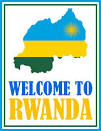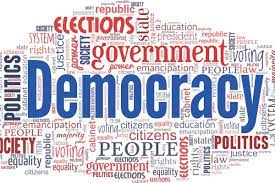This is a guest post by Mark Gardner, CST Director of Communications
CST’s new annual report on antisemitic discourse examines language and imagery within discussion and rhetoric about Jews and Jewish-related issues in 2007.
It includes brazenly antisemitic images to show the continuities between a supposedly post-racist present and an obviously antisemitic recent past. This has been paraphrased by some as ‘the new antisemitism’; and is essentially the process whereby antisemitism has been largely rebranded and repackaged as anti-Zionism.
It would, however, be incorrect to brand the vast majority of those quoted in CST’s report as antisemites. More often than not, the report explains why certain motifs, words and images bear an antisemitic resonance where none appears to be intended.
Compare, for example, current depictions of American and British pro-Israel lobbies with the leaflet below; showing a Jewish financier using a money whip against cowering politicians. The leaflet was issued by the [British] National Socialist Movement in 1962 and is obviously antisemitic in its message, imagery and intention. Nevertheless, is the underlying motif – alien Jewish conspirators controlling the façade of democracy – so different from the allegations that are now routinely laid against supporters of Israel?
The report cites an Anti-Defamation League poll showing significant recent rises in British and European antisemitic attitudes. 50% (up from 39% in 2005) of UK respondents believe it is ‘probably true’ that ‘Jews are more loyal to Israel than their own country; 21% (up from 16%) believe it is ‘probably true’ that ‘Jews have too much power in international finance markets’; and 34% agree or somewhat agree that ’American Jews control US Middle Eastern policy’. So, a third of the British public basically believe that the world’s leading superpower is doing the Jews’ bidding in the Middle East;
These charges were starkly shown in 1991 during the first Iraq War by a sticker from the veteran UK far right outfit, Gothic Ripples. This is shown below, and combines anti-Americanism with antisemitism and anti-Israel hatred. By the second Iraq War, however, such attitudes were increasingly widespread; and the charge is now quite routine in the gathering controversy over possible American responses to Iran’s growing nuclear capabilities.
The complex connection between modern anti-Israel hatred, historical antisemitism and contemporary bias against British Jews and Jewish bodies is a theme that permeates the report; especially in the section on boycotts. This includes a [British] National Socialist Movement sticker c.1962 which states, ‘Jewish atrocities in Palestine go unpunished…Everywhere Jewish power increases. Boycott Jewish Goods & Services’.
This is not to imply that UCU or any other trade union is inheriting the Nazi tradition, but it does show the banality of the latest anti-Israel mantra, ‘criticism of Israel cannot be construed as antisemitic’. Furthermore, as the report demonstrates, we are not simply witnessing ‘criticism of Israel’. Indeed, if it were simply ‘criticism’ of a nation state’s Government and policies, then reports of this type would be entirely unnecessary.
Rather, from the far right, far left and extreme Islamists, we are dealing with old ideologically driven hatreds of Jews that now find a creeping acceptance in their modern anti-Zionist guise. It is of course Jews who remain the sole physical target of the impacts that arise from supposedly post-racist ‘anti-Zionism’; experiencing reflexive hatred, social isolation, political derision, physical attacks and deteriorating morale.
Above all, however, antisemitism remains a warning sign of division and malaise within the whole of our society. It is sincerely hoped, therefore, that this report will aid our understanding of these issues and help in the struggle against antisemitism, racism and extremism.





